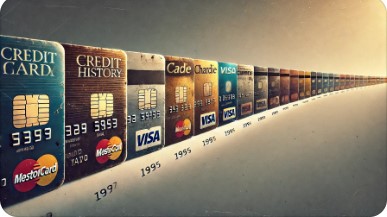You hear it all the time: “Your credit score is important.” Yet, too many people still don’t understand the factors that go into that three-digit number. Today, let’s break down one of the most overlooked aspects of your FICO score—your credit age.
What Is Credit Age and Why Does It Matter?
Your credit age, or the length of your credit history, accounts for about 15% of your FICO score. That might not sound like much compared to categories like payment history or amounts owed, but if you’ve ever tried to improve a subpar credit score, you know every percentage point matters.
Your credit age is a reflection of how long you’ve been managing credit, and lenders see this as a direct indicator of your experience. The longer your history, the more data they have to assess whether you’re reliable. Let’s be honest, lenders don’t trust short stories—they want a novel.
What Goes Into Your Credit Age?
FICO measures credit age in a couple of ways:
- The age of your oldest account – This is the big one. If you’ve had a credit card for 10 years and you’ve managed it responsibly, that’s a big checkmark in your favor. Too many of you close old accounts because you “don’t use them anymore.” Big mistake. That ancient card could be padding your credit age, even if you only pull it out twice a year to buy gas.
- The average age of all your accounts – FICO also looks at how old your accounts are on average. If you open a bunch of new accounts, even if your oldest one is ten years old, your overall average credit age drops. Keep those shiny new credit cards to a minimum, or you’ll find your score dinged when you least expect it.
Why Closing Old Accounts Can Hurt You
I get it. You’re not using that store card anymore, and they keep sending you emails to “reactivate.” So, you’re thinking, why not just close it? Here’s why: when you close an old account, you lose the benefit of its positive history.
Let’s say you opened your first credit card 15 years ago and haven’t used it in 5. That account still helps boost your credit age, which contributes to a higher FICO score. Closing it is like erasing those 15 years of financial trust. Keep your old accounts open, even if they’re just hanging out in your wallet.
The Impact of New Credit
We’ve all been there. You walk into a store, and the cashier says, “You can save 20% today if you open a store credit card!” Before you know it, you’re signing the application, only thinking about the savings.
But every new account affects your credit age. If you keep opening new lines of credit, your average account age plummets, and so does your FICO score. Not to mention, every time you open a new account, there’s a hard inquiry on your credit report, which can cause a temporary dip in your score.
How to Improve Your Credit Age
The reality is, credit age is something you can only improve with time. There’s no fast track, but here’s how you can protect and optimize your credit age:
- Keep old accounts open – Resist the urge to close accounts just because you don’t use them anymore. Even if a card is collecting dust, it’s also helping you build credit age.
- Limit new credit – You don’t need every store card or travel rewards program out there. Keep new credit inquiries to a minimum so your average account age can grow naturally.
- Be patient – This is a slow game. Building credit age takes years, and there’s no shortcut. Focus on managing the credit you already have responsibly.
The Bottom Line
Too many of you focus solely on payment history or credit utilization and completely forget about credit age. But credit age is that quiet, consistent player that can make or break your FICO score. Stop thinking about quick fixes. Credit is like a fine wine—it only gets better with age.
By understanding how credit age works and how to protect it, you can take smarter steps toward a healthier FICO score. Keep those old accounts open, manage your new credit wisely, and watch your credit score climb over time.

Pingback: The Best Luxury Credit Cards in the U.S. (Late 2025): Are They Worth It? - FMC